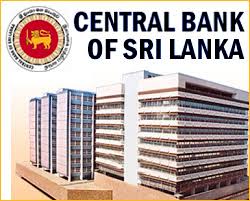
Sri Lanka Banks Post Strong Profits on the back of Economic Stability
- CNL Reporter
- August 16, 2025
- Banking and Financial
- Sri Lanka Banks
- 0 Comments
Sri Lanka’s banking sector has turned in a momentous performance so far this year with both state-owned and private lenders reporting sharp profit gains on the back of easing interest rates, a stronger rupee and improving credit demand.
The Central Bank’s policy rate cuts and stable inflation have lowered funding costs, while the Finance Ministry’s latest fiscal review pointed to a more liquid financial system and a firmer external position.
Several high officials of the finance ministry highlighted that the first half recorded a current account surplus, a milestone that has boosted market confidence and credit flows.
Among state-owned banks, Bank of Ceylon set the pace with a profit before tax of Rs. 30.0 billion for the first quarter, a 222 percent year-on-year surge, driven by stronger core earnings and tighter cost control.
People’s Bank recorded its highest-ever quarterly pre-tax profit at Rs. 17.7 billion, reflecting improved operating leverage. National Savings Bank reported a profit after tax of Rs. 7.59 billion for Q1, up 124 percent from last year, aided by higher operating income and disciplined cost management.
Leading private banks also capitalised on the favorable conditions, financial performance reports revealed. .
Sampath Bank made a Profit before Tax (PBT) of Rs 24.4 Bn and Profit after Tax (PAT) of Rs 14.7 Bn during the first half of 2025, an increase of 32 percent year on year compared to the same period in 2024.
The Sampath Group recorded a PBT of Rs 26.0 Bn and PAT of Rs 15.6 Bn, registering a year-on-year growth of 32 percent
Commercial Bank of Ceylon posted a net profit of Rs. 14.97 billion for the March quarter, up 38.5 percent, with net interest income rising 23.5 percent as deposit costs fell.
Hatton National Bank delivered a 49 percent jump in group profit after tax to Rs. 11.1 billion, supported by improved asset quality and robust capital buffers.
Nations Trust Bank became one of the first to release full half-year results, posting Rs. 9 billion profit after tax for the six months to June, up 10 percent year-on-year, alongside a 26 percent surge in loans.
DFCC Bank also reported strong first-half growth, with double-digit increases in net interest income and a solid capital position.
Mid-tier lenders mirrored the upward trend. Union Bank recorded a 247 percent surge in half-year profit after tax to Rs. 251 million, while profit before tax reached Rs. 834 million. SDB Bank booked a 156 million profit after tax for the first half, driven by improved margins and rising lending.
On the whole, the first half of 2025 is a resounding move away from crisis-era survival-based lending towards growth-based lending. Lower interest rates, a stable currency and rising demand for credit are propelling earnings across the board, with state and private banks both poised to take a bigger share of financing the country’s recovery
The Finance Ministry emphasises that fiscal transparency and progress on debt restructuring are vital to sustaining the banking sector’s stability.

